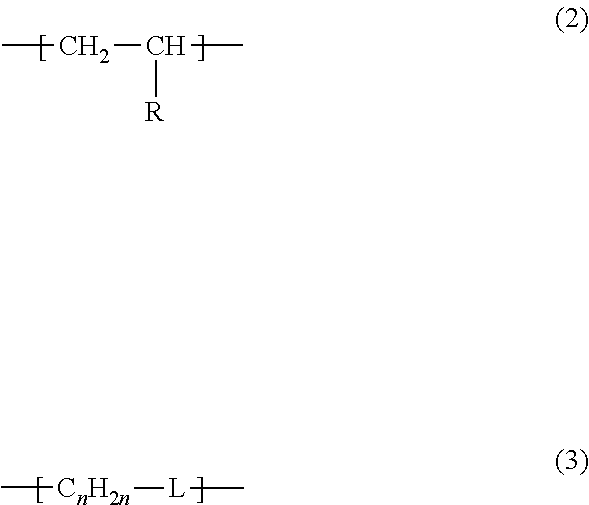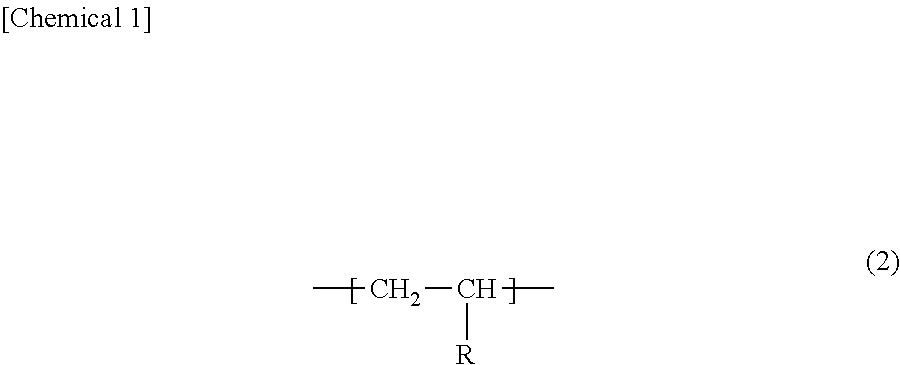Secondary battery separator
a battery separator and secondary battery technology, applied in the field of secondary battery separators, can solve the problems of short circuiting of the electrodes or thermal runaway, and achieve the effects of reducing deformation caused by shrinkage, melting, and small level
- Summary
- Abstract
- Description
- Claims
- Application Information
AI Technical Summary
Benefits of technology
Problems solved by technology
Method used
Image
Examples
example 1
[0105]1.6 parts by weight of sodium carboxymethyl cellulose (CMC, viscosity of 1 wt. % aqueous solution (at 25° C. and 60 rotations): 1724 mPa·s, decomposition temperature: 290° C., reduction ratio with drying: 8.2%, available from Daicel FineChem Ltd., product number: 2200) was added to 100 parts by weight of water, the mixture was stirred for 30 minutes at 2000 rpm using a planetary centrifugal mixer (available from Thinky Corporation, product name: Awatori Rentaro, model number: ARE-310), and a CMC aqueous solution was thereby prepared.
[0106]In addition, 18 parts by weight of water was added to 6 parts by weight of aramid fibers (average thickness: 0.56 μm, average length: 0.43 mm, average aspect ratio: 768, decomposition temperature: 400° C. or higher, 5% weight loss temperature (Td5) measured at a temperature increase rate of 10° C. / min (in nitrogen): 545° C., solid content: 20.7%, available from Daicel FineChem Ltd., trade name: Tiara, product number: KY400S), and the mixture ...
example 2
[0108]A separator (2) (thickness of the heat resistant layer: 7 μm) formed from a heat resistant layer / PP laminate with the heat resistant layer being made from a non-woven fabric containing aramid fibers and CMC was produced in the same manner as in Example 1 with the exception that the coating thickness of the heat resistant layer-forming composition (1) was changed.
example 3
[0109]A separator (3) (thickness of the heat resistant layer: 6 μm) formed from a heat resistant layer / PP laminate with the heat resistant layer being made from a non-woven fabric containing aramid fibers and CMC was produced in the same manner as in Example 1 with the exception that the coating thickness of the heat resistant layer-forming composition (1) was changed.
PUM
| Property | Measurement | Unit |
|---|---|---|
| melting point | aaaaa | aaaaa |
| weight loss temperature | aaaaa | aaaaa |
| length | aaaaa | aaaaa |
Abstract
Description
Claims
Application Information
 Login to View More
Login to View More - R&D
- Intellectual Property
- Life Sciences
- Materials
- Tech Scout
- Unparalleled Data Quality
- Higher Quality Content
- 60% Fewer Hallucinations
Browse by: Latest US Patents, China's latest patents, Technical Efficacy Thesaurus, Application Domain, Technology Topic, Popular Technical Reports.
© 2025 PatSnap. All rights reserved.Legal|Privacy policy|Modern Slavery Act Transparency Statement|Sitemap|About US| Contact US: help@patsnap.com



